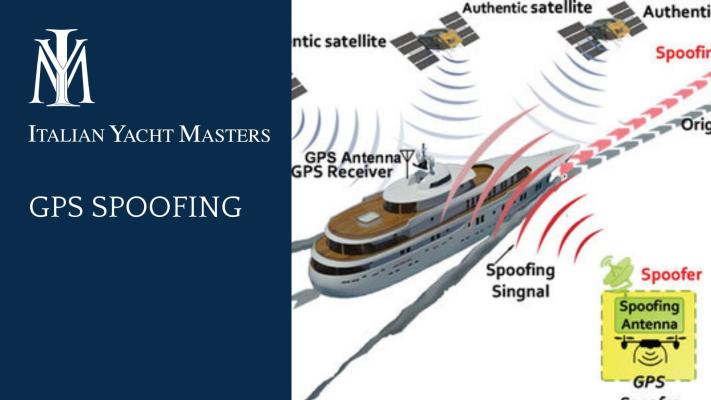
03 Jun
GPS Spoofing: A Threat to Navigational Safety
As superyacht captains, we know well how important safety is in navigation. As it is well known, GPS failure poses a threat to all navigators—not only causing the loss of the vessel’s position, but also leading to more serious incidents, such as grounding.
GPS Spoofing: A Threat to Navigational Safety
GPS technology is a fundamental tool for ensuring the safety and efficiency of our routes. However, like all technologies, GPS is not immune to vulnerabilities. One of these is GPS spoofing—a technique that consists in sending fake and corrupted signals to GPS receivers in order to produce errors in vessel position, speed and direction.
Today, in general, every vessel is equipped with a GPS receiver that acquires signals from the constellation of GPS satellites orbiting the Earth. But when the signal is interferred by a hacker, (GPS spoofing) - than the information becomes unreliable..
What Is GPS Spoofing and How Does It Work?
GPS spoofing is a technique that uses false signals to induce GPS receivers to show wrong data of position, speed over ground and course over ground.
This can be used for various purposes—for example, to divert a ship from a safe route or to create navigational confusion.
Navigational Safety Risks
GPS spoofing presents a significant risk to navigational safety. If a GPS receiver is fooled, the vessel could be steered toward a dangerous route or an unsafe area. This could result in maritime accidents, damage to port infrastructure, or even loss of life. As captains, it’s our duty to ensure the safety of our passengers and crew—and GPS spoofing is a threat we cannot ignore.
GPS Spoofing Incidents and How to Defend Against Them
According to recent data, GPS spoofing cases have increased by 350%. The most affected areas include: the Red Sea, the coastal waters of Yemen, Israel and Turkey, the Black Sea, and Shanghai.
To defend against this threat, it's important to use authenticated signals, such as those provided by Galileo satellites, and to constantly monitor reported positions for anomalies. Additionally, regularly updating device software is crucial to ensure the latest security patches are installed.
Modern receivers are now using different positioning satellite systems at the same time, becoming GNSS receivers, that avoid the dependence from a unique satellite navigation system.
Possible Countermeasures
In the event of a GPS failure, what are your options?
Constantly monitoring the health and reliability of the satellite position information, use the ECDIS in DR mode (dead reckoning), allowing the ECDIS to calculate the ship’s position using the vessel’s speed (from the speed log) and heading (from the gyrocompass).
Make sure that the receiver can handle alternative satellite systems like Galileo, Glonass, or Baidu (or upgrade to a GNSS receiver when possible) as well as use radar navigation, where the ship’s position is determined by measuring the distance and bearing of a clearly visible radar target.
Conclusion
In conclusion, GPS spoofing is a real threat to navigational safety, and maritime operators must be aware of this risk and adopt advanced security measures to protect themselves. GPS is a powerful tool for navigation, but it must be used safely and responsibly. It’s vital that the maritime community comes together to share information and best practices to prevent GPS spoofing attacks and ensure safe navigation.
Captains and officers have to rely on traditional navigation as the base of safety, considering GPS/GNSS as what it really is: an AID TO NAVIGATION.




